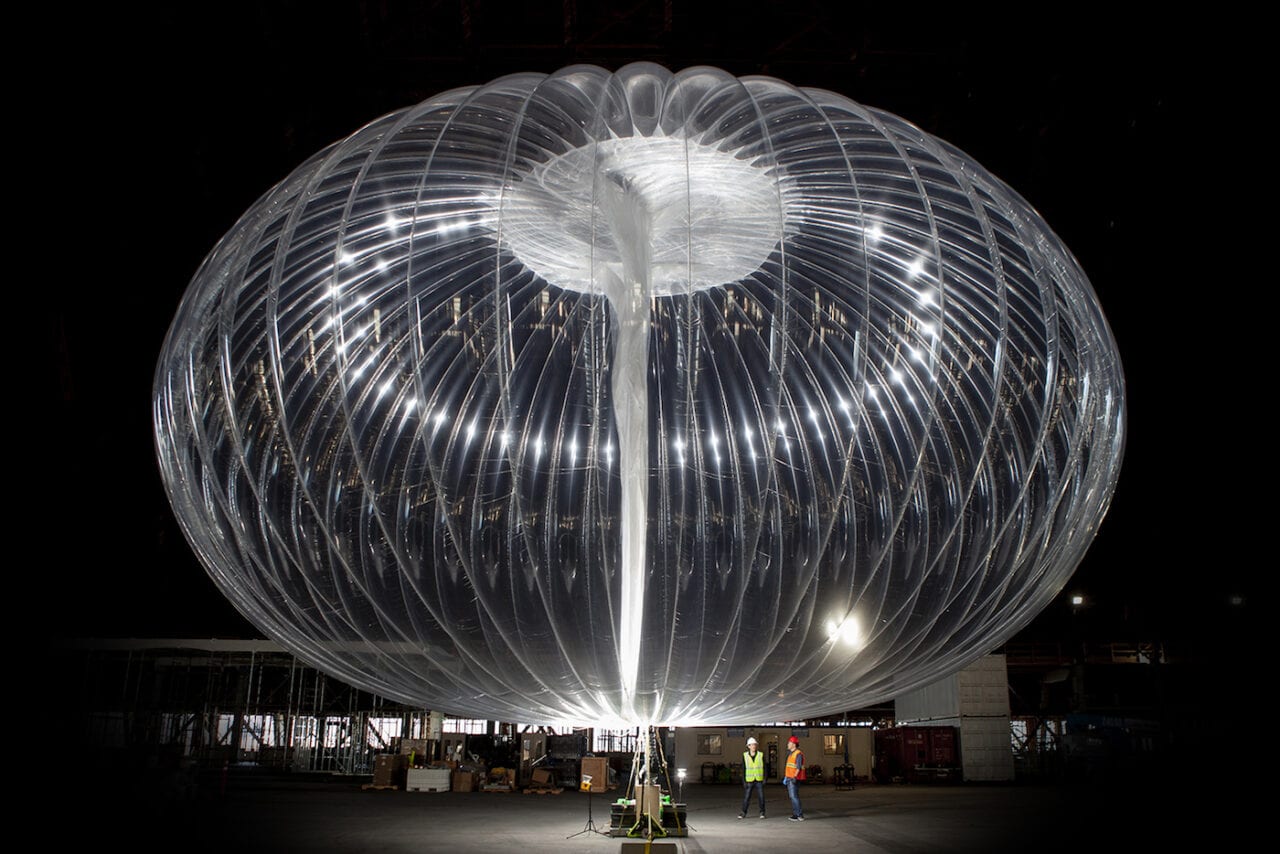
Alphabet subsidiary Loon, whose High Altitude Platform Station (HAPS) ballon is pictured here, is coming to an end, according to a Jan. 22 blog post published by the company’s CEO.
Alphabet, parent company of Google, is shutting down Loon, its subsidiary dedicated to providing broadband from balloons in the stratosphere. Loon CEO Alastair Westgarth announced the news in a Medium blog post on Jan. 22.
Loon had begun providing High Altitude Platform Station (HAPS) ballon-powered Internet services to users in July of last year, and had announced plans to expand globally at the time. In recent years, the company had demonstrated that up to 20 of its balloons clustered together connected to a mobile network on the ground can create a “mesh network’ with up to 4,000 square kilometers of regional coverage.
Representatives for Loon did not respond to an inquiry for comments on the decision to shut down the company.
“Loon has been chasing the hardest problem of all in connectivity — the last billion users: The communities in areas too difficult or remote to reach,” Westgarth wrote. “While we’ve found a number of willing partners along the way, we haven’t found a way to get the costs low enough to build a long-term, sustainable business.”
Under the infinite funding and resources provided by Alphabet, Loon was able to become one of the first companies in the industry to transform HAPS from concept to prototype. To date, Loon vehicles have logged over one million flight hours and travelled over 40 million kilometers in the stratosphere.
During a September 2020 interview with Via Satellite, a sister publication to Aviation Today, Dr. Brian Barritt, technical lead at Loon and a senior software engineer for Google, said an early test of the Loon service in Kenya showed latency of just 19 milliseconds. Barritt had believed the company’s concept of operations resolved the most common barriers to entry for new HAPS platforms.
“Loon’s network design already solves most interoperability problems; we partner with existing MNOs and integrate with their core network using standard 3GPP interfaces that are commonly used to facilitate roaming between MNOs,” says Barritt. “As a result, end users are able to use their existing handsets to communicate over our aerospace network. It’s so frictionless that end users can’t easily distinguish between connection to HAPS versus a terrestrial tower.”
Westgarth highlighted Loon’s achievements: The venture flew a Loon balloon for 321 days from May 2019 to March 2020, built a communications system capable of delivering mobile internet coverage over an 11,000 square kilometer area, and made communications payloads that can connect from the stratosphere to devices on the ground.
Astro Teller, captain of X, the Google/Alphabet research arm, wrote in a separate blog post that the company hopes to find employees other roles at X, Google, and Alphabet. He said a small group from the Loon team will stay on to wrap up Loon’s operations, including a pilot service in Kenya. In addition, X is committing $10 million to support connectivity projects in Kenya.
“We hope that Loon is a stepping stone to future technologies and businesses that can fill in blank spots on the globe’s map of connectivity,” Teller wrote. “We want to share what we’ve learned and help creative innovators find each other — whether they live amidst the telcos, mobile network operators, city and country governments, NGOs or technology companies.”
Loon had a number of partnerships with the satellite industry, notably an agreement with Telesat announced in 2019 to deliver a network operating system design that Telesat could use to support its global Low Earth Orbit (LEO) satellite constellation. Loon is a member of the HAPS Alliance, along with Airbus Defence and Space and Intelsat, and partnered with SES Networks to deliver connectivity to Puerto Rico in the wake of Hurricane Maria.